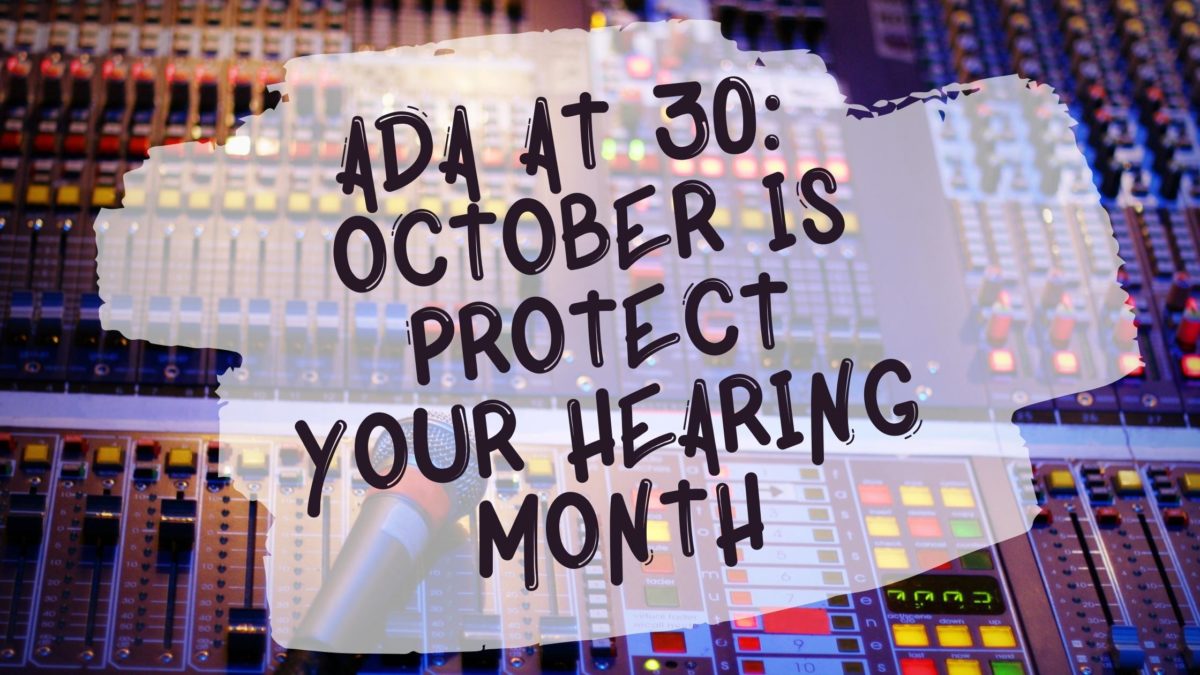When you’ve finished brainstorming the perfect Halloween costume, you might turn your attention to another annual October event: Protect Your Hearing Month. All October, people, and organizations invested in healthier hearing are helping to spread the word about why prioritizing healthy habits today can benefit our hearing for decades to come.
Certainly, later onset hearing loss is most commonly associated with old age. And that’s true, it’s a natural part of the aging process. However, there is another, the not-so-silent danger that comprises the next leading cause of hearing loss: too-loud noise. And we can take steps to minimize the risk environments we subject our ears to by instilling a few healthy habits.
What is noise-induced hearing loss?
Noise-induced hearing loss happens when we are exposed to dangerously loud sounds. This can happen all at once, like an accident or explosion. In those cases, hearing loss from the incident is usually noted quickly. However, our ears can also be damaged by repeated exposure to too-loud noise over time. In some cases, it can happen so subtly that we aren’t even aware the noise environments were risky.
Noise damages our hearing because of the delicacy of the hair cells located in the inner ear. They are extremely important parts of our hearing process as they gather sound information and then transmit those signals to the brain via the auditory nerve. These cells can become damaged if exposed to dangerously loud sounds. When they are harmed, they do not repair themselves or regenerate. Instead, we lose the ability to receive all of the sound happening around us. The experience of this is hearing loss.
How loud is too loud?
Experts advise that we keep volumes reasonable and under 85 decibels — decibels are the unit of measurement for sound. We are commonly exposed to noise over that threshold in everyday scenarios. Mowing the lawn with a power motor exposes you to 90 decibels of sound.
Of course, time is an important ingredient here. Exposure to noise over 85 decibels isn’t ideal but it also isn’t inherently dangerous. If that noise exposure were to continue over many hours, weeks and months, though, your risk for hearing loss goes up. An important rule is to try and keep extremely loud noise exposure — 100 decibels or more — under 15 minutes.
Rock concerts, shooting ranges, sports stadiums, and even symphonic concerts are all recreational activities that can easily emit sound exceeding 100 decibels.
Hearing loss in the time of earbuds
A new behavior that is concerning is the amount of time we’re plugged into headphones and earbuds. Though there was no discernible effect during the heyday of the walkman, today’s behaviors are much more insidious.
While the headphones usage of the walkman era was probably nearly as loud as today’s earbuds, they were used primarily for listening to music on the go. Presumably, once people got to where they were going, the headphones came off.
That is not how we wear earbuds today. Because we’ve got a supercomputer (our smartphone) with us at all times and so much of our lives happen in connectivity, we can be plugged into earbuds for a vast majority of our day. Consider what activities happen on our devices: school, meetings, music, movies, television, podcasts, meetups, and phone calls.
Monitor your earbud and headphone usage
Earbuds can produce sounds up to 110 decibels. You should never have the volume cranked up. Instead, try to stay around half or two-thirds of maximum volume. It’s also possible to track the decibel output by your headphones. On an iPhone, for instance, tap the ‘Health’ app. Scroll down to view headphone audio levels on your summary page.
If your device does not track your headphone decibel output, you could download an app that measures audio levels and put your headphones up to the microphone. These apps are not a perfect science, but they can give you a pretty good estimate.
Try out hearing aids
If you’re already living with a degree of hearing loss, you might seek out some interventions. Due to a range of obstacles, hearing aids are not worn by the majority of people who could use them. However, hearing aid wearers report high levels of satisfaction and improved relationships with loved ones.
Schedule a hearing exam
Whether you’re interested in preventing hearing loss or seeking solutions, we’re here to help. Schedule a hearing consultation today and our team of experts will guide you through an easy hearing exam to get you started on the path to better hearing.

